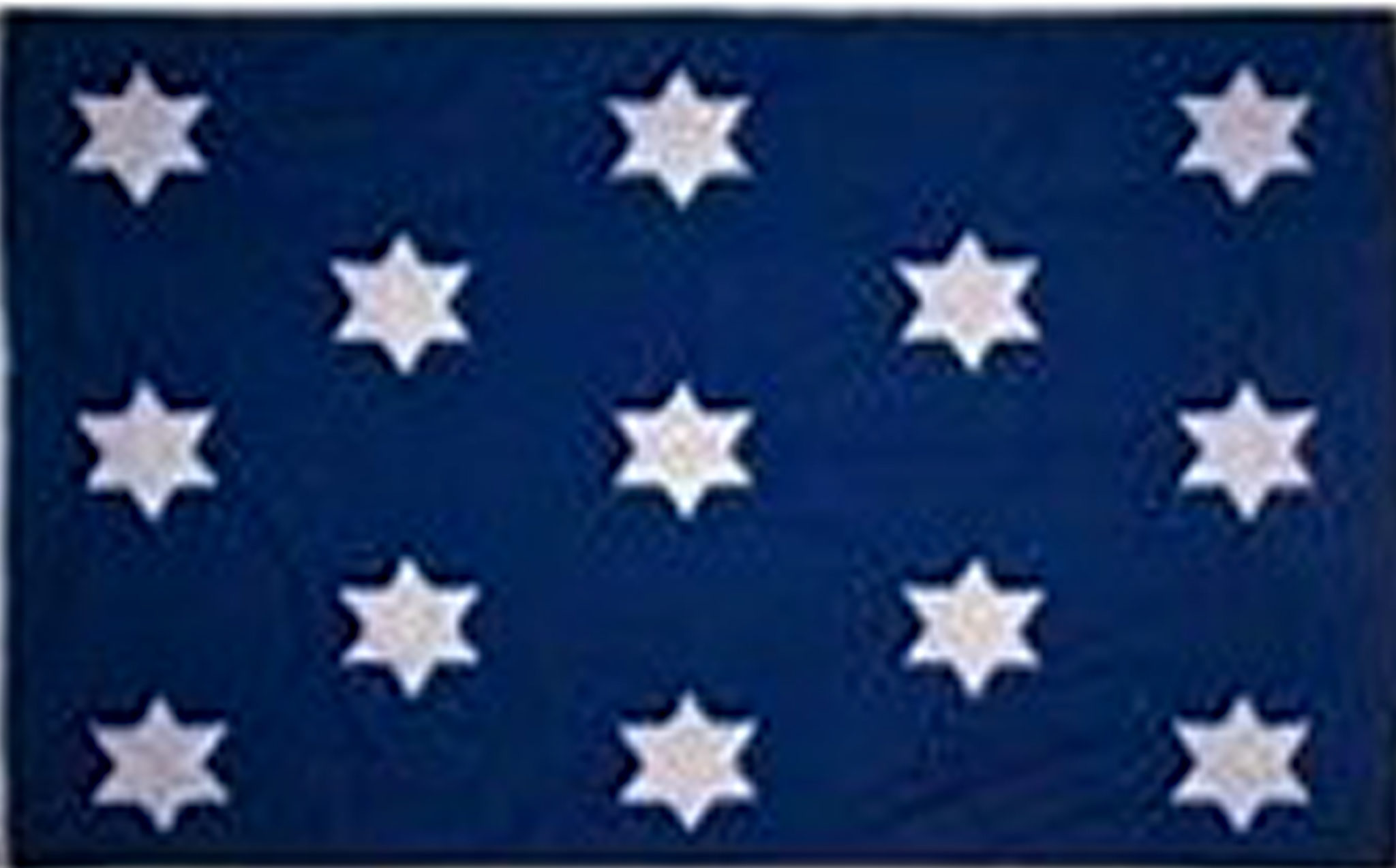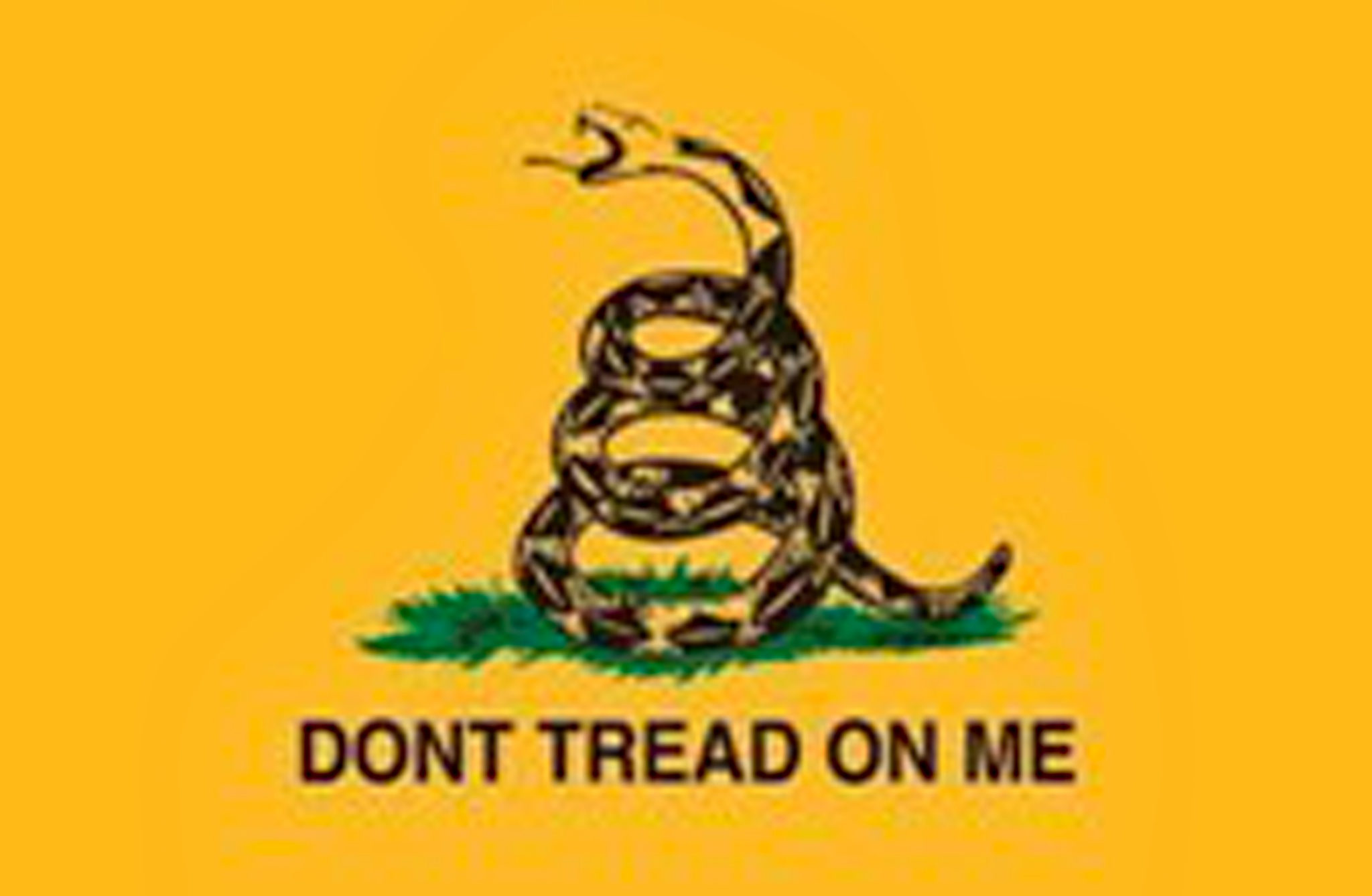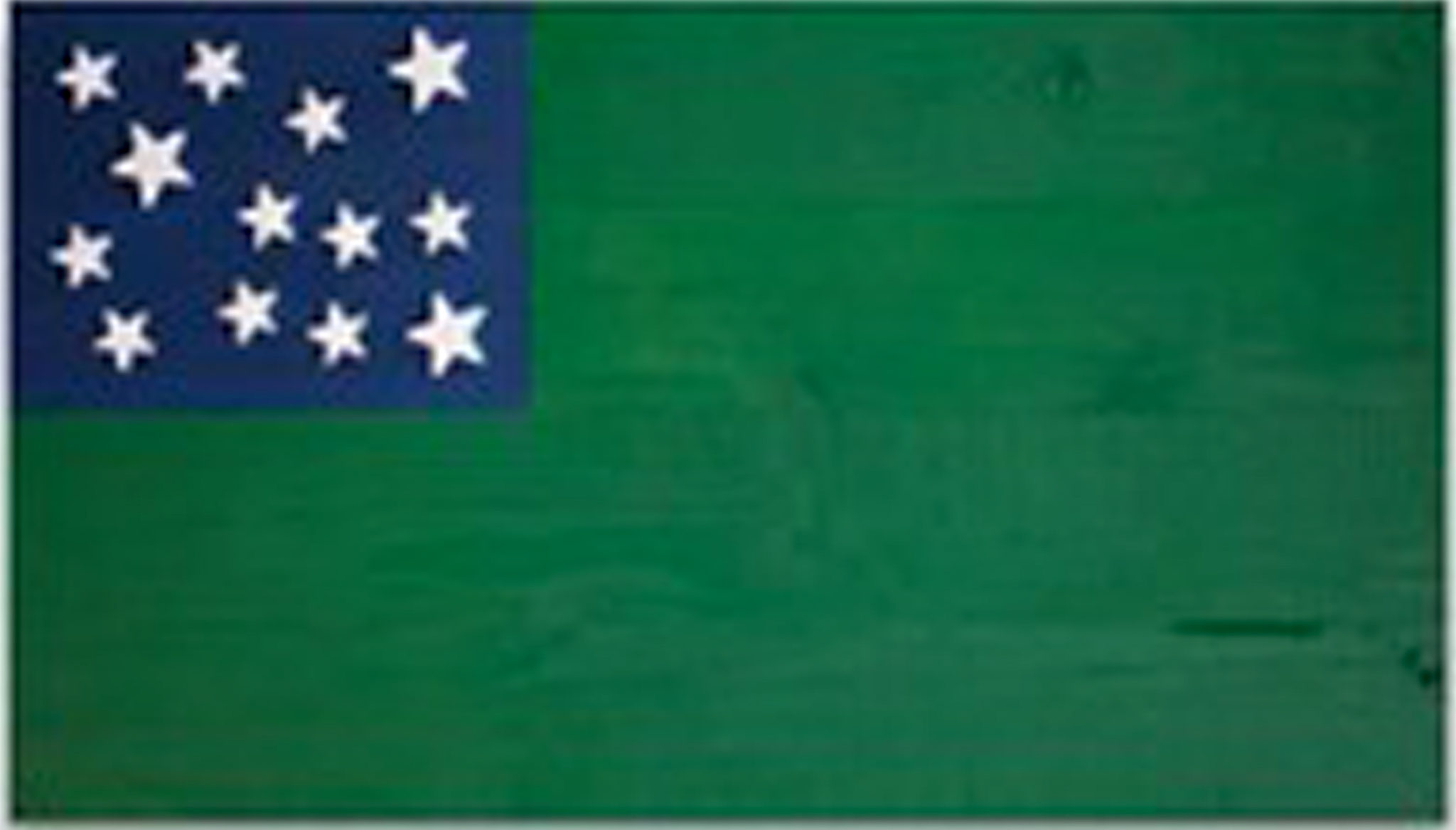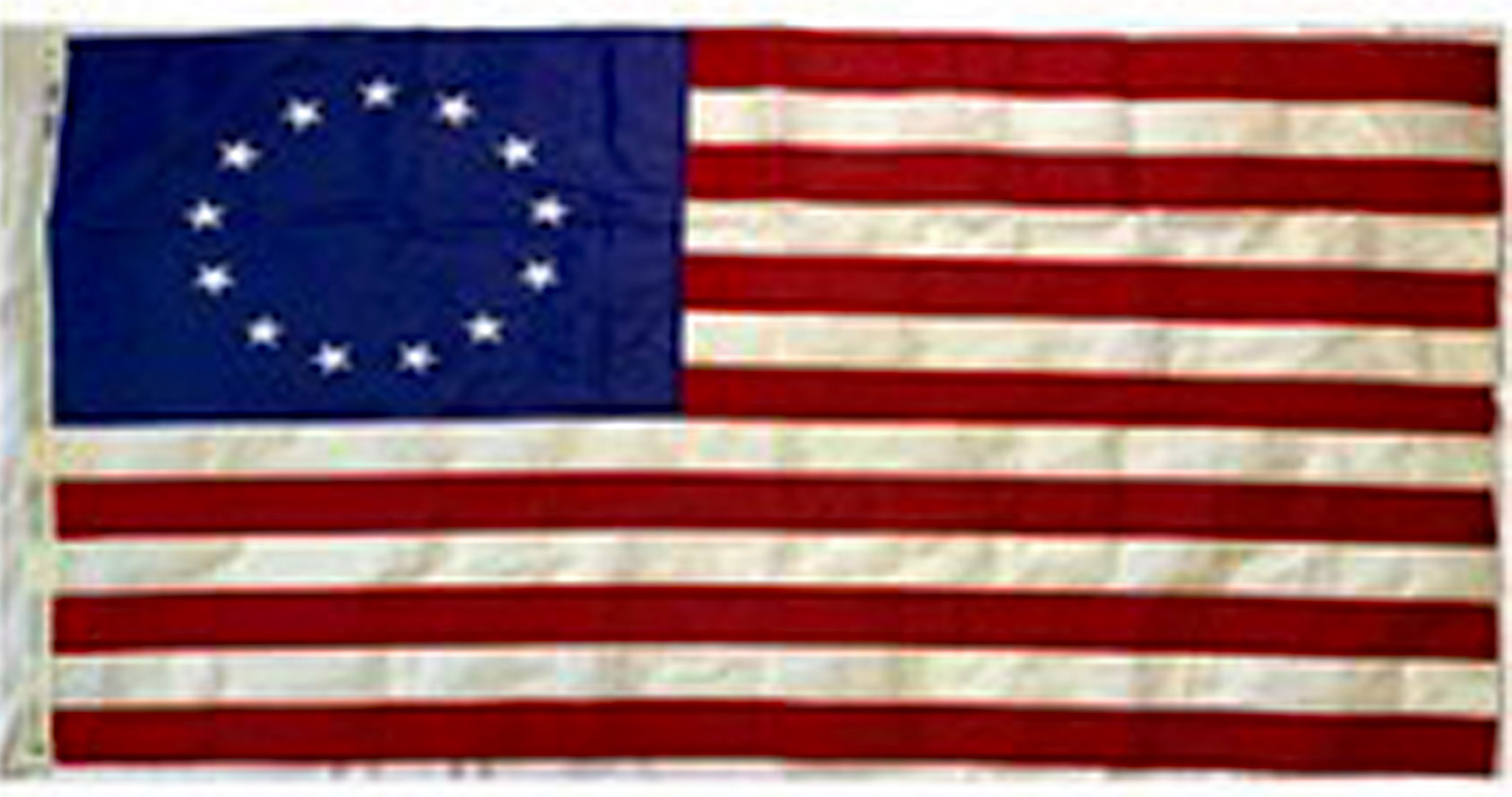What Were All Those Flags in Alexandria, Virginia Recently?!

By Donna Reuss
Alexandria, VA – Wow, what an exciting George Washington Parade! Masons from around the U.S. and other countries and many local organizations and businesses marched in the annual event to honor our first President and commemorate the cornerstone centennial of the George Washington Masonic National Memorial.
Members of Alexandria American Legion Post 24 – The George Washington Post –participated and were distinguished by the variety of flags they carried. But what were all those flags? They were flags of the American Revolution, the war led by General George Washington.
Behind the American flag color guard, the flag that led the formation was what tradition holds was George Washington’s Headquarters Flag, circa 1777-1783. Also called the Commander-in-Chief’s standard, it would have signified Washington’s presence in the field. General Washington reviewed the troops for the last time from the steps of Gadsby’s Tavern, the Post 24 home, a few months before his death in 1799. Astronaut John Glenn carried a reproduction of this flag into space as part of the lead-up to the 1999 bicentennial commemoration of Washington’s death.

The Gadsden Flag was presented to the Continental Congress by Colonel Christopher Gadsden, the delegate from South Carolina. The flag was initially designed to convey a patriotic message. The original image, attributed to Benjamin Franklin in 1754 as a political cartoon accompanying his newspaper article Join, or Die, depicted the 13 British colonies as separate pieces of a snake, which Franklin urged to unite against the French and its allies. There was also a naval version of the Gadsden flag, commonly known as the First Navy Jack.
For most of U.S. history, this flag was all but forgotten until the First Navy Jack version resurfaced in 1976 on U.S. Navy ships to celebrate America’s bicentennial. Its use remained largely apolitical until recent times.
The Culpeper Minutemen Flag represented the minutemen who were part of Patrick Henry’s First Virginia Regiment. The Culpeper Minutemen, a militia group from the frontier territory around Culpeper, Virginia, was formed in 1775 by the 3rd Virginia Convention. The flag is one of many variations on the original Gadsden Flag design.


Some say the Bunker Hill Flag was flown on June 17, 1775, at the Battle of Bunker Hill. It is an English blue field with the English patron St. George’s Cross and a pine tree in the canton. The tree represented liberty to the New England colonists, who often modified existing British flags with pine trees to show they were still loyal to the British Crown but would defend their liberties.
However, other historians believe this flag was not flown at the battle. They contend that if any flag was flown, it was a red flag with a simple pine tree in the corner, known as the Continental Flag.

The Green Mountain Boys Flag was the flag of a militia brigade of settlers and land speculators known as the Green Mountain Boys, who controlled the area called the New Hampshire Grants, present-day Vermont. Their major engagements were at the Battle of Bennington and the capture of Fort Ticonderoga. After Ticonderoga, they headed to Boston to help defeat the British siege on the city. The flag is flown today to symbolize the Vermont National Guard.
On June 14, 1777, the Second Continental Congress passed the Flag Resolution. The first official flag of the new United States was to be 13 alternating red and white horizontal stripes and 13 white stars in a blue canton.

The Betsy Ross Flag, an early design among many, has long been regarded as a symbol of the American Revolution and the young Republic. Its name stems from the once widely believed story that General Washington, Robert Morris, and John Ross went to seamstress Betsy Ross with a rough design, from which she created the flag. The Betsy Ross flag design is featured prominently in post-Revolutionary paintings about the war. It is used ceremonially today to represent the history of the nation.
George Washington was the only president to serve under this flag (1789-1797). The flag lasted until 1795, when Vermont and Kentucky were admitted to the Union. Again, the original intent of the flag was as a patriotic symbol.
Flag advocacy is part of the American Legion’s Americanism pillar. Among other things, the Legion provides educational materials and resources covering various topics on U.S. flags and flag etiquette, such as proper flag display and disposal.
Special thanks to Doug Gurka, American Legion Post 24 Americanism Chair, for organizing the Legion parade unit and contributing to this month’s article.
____________________________________________________________________________
If you are a veteran, a veteran’s family member, or know a veteran who needs help, go to Virginia Board Veterans Services at dvs.virginia.gov/dvs; dss.virginia.gov/community/211.cgi; contact the American Legion Post 24 Veterans Service Officer at [email protected]; or check out the Resources List on the Post 24 website at valegionpost24.com. For crisis intervention and suicide prevention services, dial 988 and Press 1, or text 838255, for the Veterans Crisis Line.





New research regarding the blue flag with 13-six pointed stars, traditionally known as General George Washington’s headquarters flag or Commander-in-Chief flag, indicates that it was a battle flag attached to the gun carriage of field pieces. Donald W. Holst, former curator of Armed Forces History, Museum of American History, Smithsonian Institution, came to this conclusion after 40 years’ worth of research. Sources: (1) Holst, Donald W. “Notes on Continental Artillery Flags and Flag Guns, Part I.” Military Collector & Historian. Vol. XLVI. No. 3 (Fall 1994). pp. 122-27. (2) Holst, Donald W. “Notes on Continental Artillery Flags and Flag Guns, Part II.” Military Collector & Historian. Vol. XLVI. No. 4 (Winter 1994). pp. 171-74.
Submitted by Earl P. Williams, Jr., U.S. flag historian (paleovexillologist)